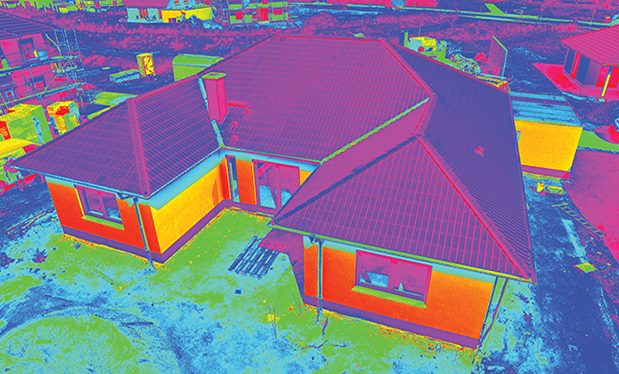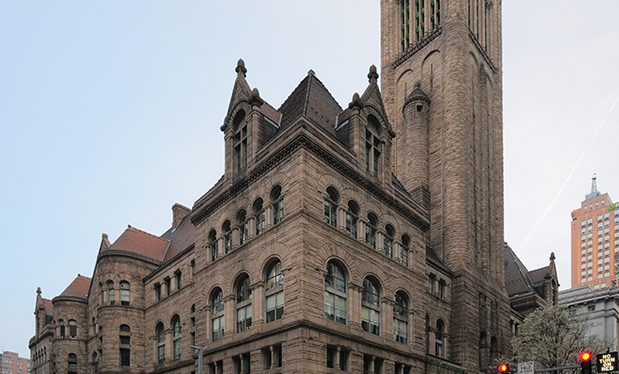On Dec. 8, 2019, ASTM International’s Committee D08 on Roofing and Waterproofing held a technical symposium addressing roofing research and standards development. The symposium was the ninth in a series dating to the mid-1980s and provided insight into current research being conducted in the North American roofing industry.
The symposium consisted of presentations of 11 peer-reviewed research papers conducted by 29 researchers. An overview of several of the presentations follows.
Some highlights
In “Overview of the IBHS Roof Aging Farm Program,” the Institute for Building and Home Safety provided an interim report addressing its field aging of asphalt shingle roof systems.
In 2013, IBHS began collecting data gathered from annually inspecting and periodically testing field performances of asphalt shingle roof systems. The data currently consists of 84 roofs at five locations throughout the U.S. All the roofs are constructed similarly, oriented similarly, have the same slope and are of similar color.
To date, the results indicate shingle granule loss of varying severities is the most common condition observed. The research provides several theories for the varying granule loss, including varying field exposure temperatures, solar radiation, and rainfall and snowfall rates. Also, lumps, unevenness and fasteners backing out are reported on multiple roofs but occur less frequently than granule loss.
IBHS will continue data collection and visual observations and conduct laboratory tests on specimens collected.
In “Energy Resistance of Commercial Roofs,” researchers from the National Research Council Canada presented results of thermal resistance testing of full-scale roof assemblies; NRCA provided funding for this research. Full-scale testing allows quantifying the actual overall thermal performance of roof assemblies and the effects mechanical fasteners can have on roof assemblies’ thermal performances.
Test roof assemblies were constructed using various thicknesses of expanded polystyrene, polyisocyanurate and stone wool insulation to achieve overall roof assembly R-values of 25, 31 and 36. These values represent the R-value requirements in the Canadian energy codes’ Zones 2 and 3, 4 through 6, and 7 and 8, respectively. Thirty-six roof assembly configurations were constructed and tested.
Research results show the measured R-values for the EPS- and stone wool-insulated roof assemblies were 5% to 7% below their thermal design R-values. Newly installed polyisocyanurate insulated roof assemblies exceeded long-term thermal resistance values but exhibited temperature-dependent R-value curves resulting in lower R-values. The thermal bridging effects of mechanical fasteners were significant—on average 2% to 20% below design values depending on fastener density.
In “Effects of Moisture in Concrete Roof Decks on Vapor Retarder Adhesion,” researchers from Simpson, Gumpertz & Heger Inc., Waltham, Mass., evaluated the concrete cure time before vapor retarder placement and vapor retarder adhesion to the concrete over time.
Sixty small-scale concrete specimens were cast, and three SBS polymer-modified vapor retarders were applied at two-, seven-, 14- and 28-day intervals after concrete placement. The specimens were stored at laboratory conditions away from direct sunlight. There was no temperature differential across the specimens that would induce a vapor drive. At two, seven, 14, 28, 103 and 637 days after vapor retarder application, small disks of the vapor retarder were cut and their adhesion to the concrete specimens were tested.
The research results generally showed slightly higher adhesive strengths on the older concrete specimens. Vapor retarder adhesion did not change significantly during the first 115 days after installation. However, vapor retarder adhesive strength trended downward between days 115 and 637. At 637 days after installation, vapor retarder adhesion was 50% to 57% less than at 103 days.
Published proceedings
ASTM International recently published the symposium’s proceedings as Selected Technical Papers 1621, “Roofing Research and Standards Development: 9th Volume.”
If you are interested in additional information about the research papers highlighted here or other research papers presented, I encourage you to purchase the symposium proceedings by accessing ASTM International’s website, www.astm.org.
Mark S. Graham is NRCA's vice president of technical services.
@MarkGrahamNRCA
ASTM research topics
Following is a list of presentation titles from ASTM International’s Committee D08 on Roofing and Waterproofing’s technical symposium.
- The Potential Impact of Cool Roof Technologies upon Heat Wave Meteorology and Human Health in Boston and Chicago
- Validation of Roofing Membrane Composition by NMR: Products of Ketone-Ethylene Ester and Polyvinyl Chloride
- Waterproofing Applications for Floodproofing and Resiliency
- Overview of the IBHS Roof Aging Farm Program
- Does the Underlayment Matter?
- A Scientific Approach to Understanding Walkability and Grip to Deck of Roof Underlayment
- Laboratory Conditioning Methods for Asphalt Shingles
- Simulating the Thermal Impact of Typical Roof Penetrations Energy Resistance of Commercial Roofs
- The Durability of Polyolefin Polymers in Steep Slope Roofing Underlayment Materials—Part One
- Effects of Moisture in Concrete Roof Decks on Vapor Retarder Adhesion
This column is part of Research + Tech. Click here to read additional stories from this section.



